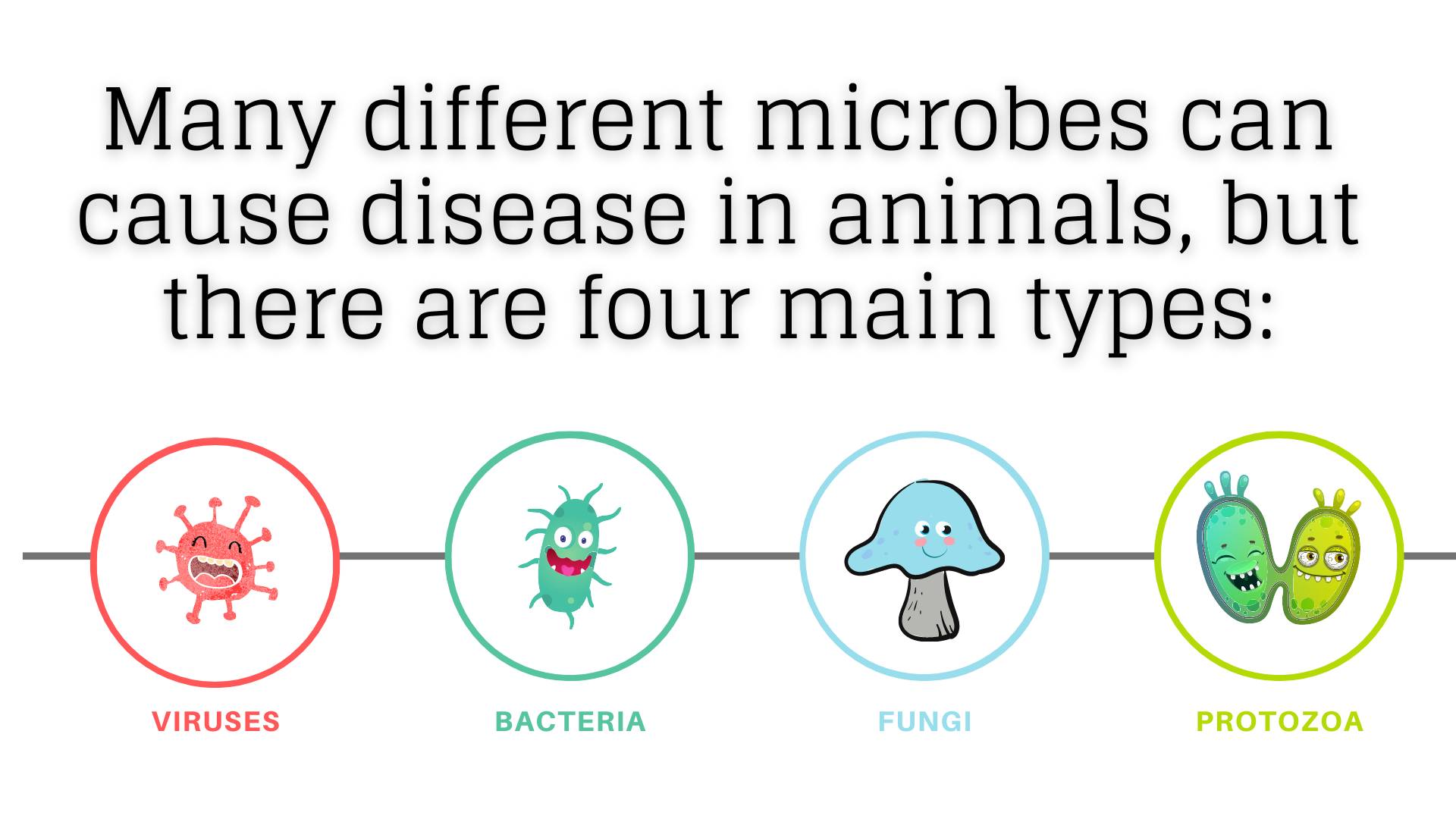Biological agents are the most common cause of illness. Complex organisms such as birds and mammals regularly act as hosts to a rather large menagerie of microorganism guests. In humans, it’s estimated that 100 billion microorganisms routinely share our bodies. These regular guests are called normal flora, and for the most part, are harmless to their hosts. In some cases, normal flora – like the digestive bacteria that help break down food – is actually beneficial. But under certain circumstances, these normally benign “bugs” can cause disease. When a microorganism causes disease, whether a member of the normal flora or a recently introduced bug that is just passing through, it’s called a pathogen.
When conditions are just right for them, pathogens proliferate to the point that their numbers simply overwhelm the animal, like weeds taking over a garden. Some also produce toxins as by-products of their bodily functions; the clostridium bacteria, whose toxins can cause tetanus, botulism, and blackleg, are prime examples. These toxin-producing pathogens are capable of causing illness even when only a few are actually present. The biological agents include bacteria, viruses, yeast and other fungi, worms and other parasites.